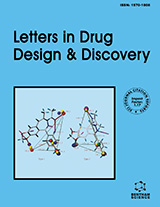Abstract
Background: Astragaloside IV (AS-IV) has been shown to have a curative effect on non-small cell lung cancer (NSCLC). This study aimed to elucidate the role of AS-IV in NSCLC cell anlotinib resistance (AR).
Methods: The NSCLC/AR cells, resistant to anlotinib, have been produced. The role of AS-IV in the AR of NSCLC cells about the miR-181a-3p/unfolded protein response (UPR)- endoplasmic reticulum associated degradation (ERAD) pathway was then discussed by treating the cells with anlotinib or AS-IV, or by manipulating them with inhibitors or mimics of miR- 181a-3p, HRD1 or Derlin-1 overexpression plasmids.
Results: We found that AS-IV could suppress the AR of NSCLC cells. In addition, miR-181a- 3p was elevated in NSCLC/AR cells. Functionally, AS-IV limited the AR of NSCLC cells by reducing miR-181a-3p. Further, activation of the UPR-ERAD pathway was correlated with AR in NSCLC cells. Increased sensitivity of NSCLC cells to anlotinib caused by miR-181a-3p inhibitor could be reversed by overexpression of HRD1 or Derlin-1.
Conclusion: This research revealed a promising NSCLC/AR treatment approach by showing that AS-IV exposed NSCLC cells to anlotinib by inhibiting the miR-181a-3p/UPR-ERAD axis.
Current Computer-Aided Drug Design
Title:Astragaloside IV Overcomes Anlotinib Resistance in Non-small Cell Lung Cancer through miR-181a-3p/UPR-ERAD Axis
Volume: 20
Author(s): Lihuai Wang, Tonglin Sun, Xiao Yang, Zhi Wen, Yinhui Sun*Hua Liu
Affiliation:
- Department of Pathophysiology, Medical College, Hunan University of Traditional Chinese Medicine, Changsha 410208, Hunan Province, China
Abstract: Background: Astragaloside IV (AS-IV) has been shown to have a curative effect on non-small cell lung cancer (NSCLC). This study aimed to elucidate the role of AS-IV in NSCLC cell anlotinib resistance (AR).
Methods: The NSCLC/AR cells, resistant to anlotinib, have been produced. The role of AS-IV in the AR of NSCLC cells about the miR-181a-3p/unfolded protein response (UPR)- endoplasmic reticulum associated degradation (ERAD) pathway was then discussed by treating the cells with anlotinib or AS-IV, or by manipulating them with inhibitors or mimics of miR- 181a-3p, HRD1 or Derlin-1 overexpression plasmids.
Results: We found that AS-IV could suppress the AR of NSCLC cells. In addition, miR-181a- 3p was elevated in NSCLC/AR cells. Functionally, AS-IV limited the AR of NSCLC cells by reducing miR-181a-3p. Further, activation of the UPR-ERAD pathway was correlated with AR in NSCLC cells. Increased sensitivity of NSCLC cells to anlotinib caused by miR-181a-3p inhibitor could be reversed by overexpression of HRD1 or Derlin-1.
Conclusion: This research revealed a promising NSCLC/AR treatment approach by showing that AS-IV exposed NSCLC cells to anlotinib by inhibiting the miR-181a-3p/UPR-ERAD axis.
Export Options
About this article
Cite this article as:
Wang Lihuai, Sun Tonglin, Yang Xiao, Wen Zhi, Sun Yinhui*, Liu Hua, Astragaloside IV Overcomes Anlotinib Resistance in Non-small Cell Lung Cancer through miR-181a-3p/UPR-ERAD Axis, Current Computer-Aided Drug Design 2024; 20 () . https://dx.doi.org/10.2174/0115734099252873231117072107
| DOI https://dx.doi.org/10.2174/0115734099252873231117072107 |
Print ISSN 1573-4099 |
| Publisher Name Bentham Science Publisher |
Online ISSN 1875-6697 |

- Author Guidelines
- Bentham Author Support Services (BASS)
- Graphical Abstracts
- Fabricating and Stating False Information
- Research Misconduct
- Post Publication Discussions and Corrections
- Publishing Ethics and Rectitude
- Increase Visibility of Your Article
- Archiving Policies
- Peer Review Workflow
- Order Your Article Before Print
- Promote Your Article
- Manuscript Transfer Facility
- Editorial Policies
- Allegations from Whistleblowers


























